Treating Your Yard For Mosquitoes, Fleas, & Ticks: Advice For Maryland Homeowners
Who doesn’t want to enjoy warm summer days and evenings? Grilling out on the patio can build memorable moments with family and friends. Throwing the ball with the kids or the dog gets everyone outside enjoying the fresh air. And sometimes even just sitting outdoors and listening to the birds sing can help decrease anxiety and give you a moment to unwind. This is your home landscape, and you want to enjoy it.
What you don’t want during these times outside are unwanted guests … and we’re not talking about nosy neighbors. We’re talking about small, pesky insects that are eyeing you and your family members like meals.
Yep, we’re talking about mosquitoes, fleas, and ticks. Whether it’s the itchy welts they cause or their blood-sucking ways, none of these pests are welcome in your yard. Not only are they annoying, but they can also carry some pretty nasty diseases.
You could douse yourself with bug spray, wear multiple layers of clothing, and light all the citronella candles in the world, but you still might not be able to keep them away.
Let’s learn more about these pests and how to get rid of mosquitoes in Maryland and fleas and ticks in Maryland.
Table of Contents
- What to Know About Mosquitoes in Your Yard
- How to Get Rid of Mosquitoes in Your Yard
- Facts about Fleas in Maryland
- What You Need to Know About Ticks in Maryland
- How to Prevent Fleas and Ticks in Your Yard
- FAQs About Professional Flea and Tick Yard Treatments
- How to Choose a Mosquito, Flea, and Tick Control Service in Central and Southern Maryland
What to Know About Mosquitoes in Your Yard
Mosquitoes in Maryland can not only be a major source of frustration, keeping you from being able to spend time in your very own yard, but they can also be a serious threat.
Use This Tool to Compare Your Local Pest Control Companies
Let’s look at some key facts about mosquitoes so you can understand these pests a bit better.
Which Mosquitoes Are Most Problematic in Maryland?
There are three major mosquito breeds you will typically see in your Maryland backyard.
The main types of mosquitoes are:
- Asian Tiger
- Common House
- Yellow Fever
All three of these mosquitoes can spread diseases like West Nile, Zika, dengue, and malaria.
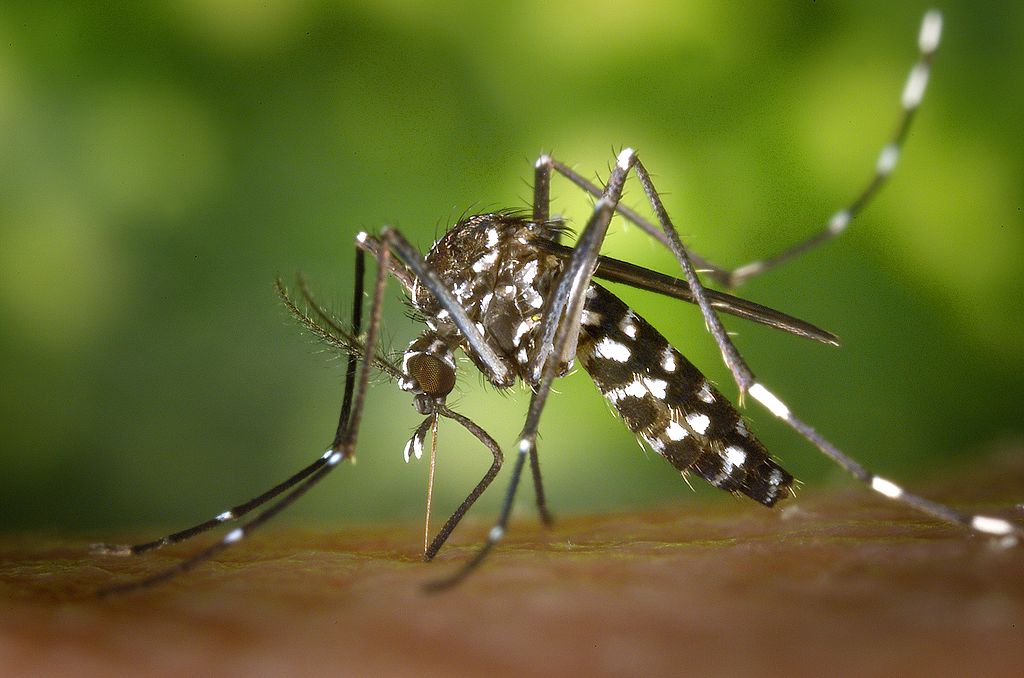 A female mosquito can lay nearly 400 eggs at a time. Approximately 12 days later, you’ll have new adults buzzing about. If you can believe it, mosquitoes only live for about 14 days, but they can cause quite a bit of trouble in that time.
A female mosquito can lay nearly 400 eggs at a time. Approximately 12 days later, you’ll have new adults buzzing about. If you can believe it, mosquitoes only live for about 14 days, but they can cause quite a bit of trouble in that time.
When Do Mosquitoes Come Out in Maryland?
Mosquitoes become active in Central and Southern Maryland when temperatures reach the upper 40s.
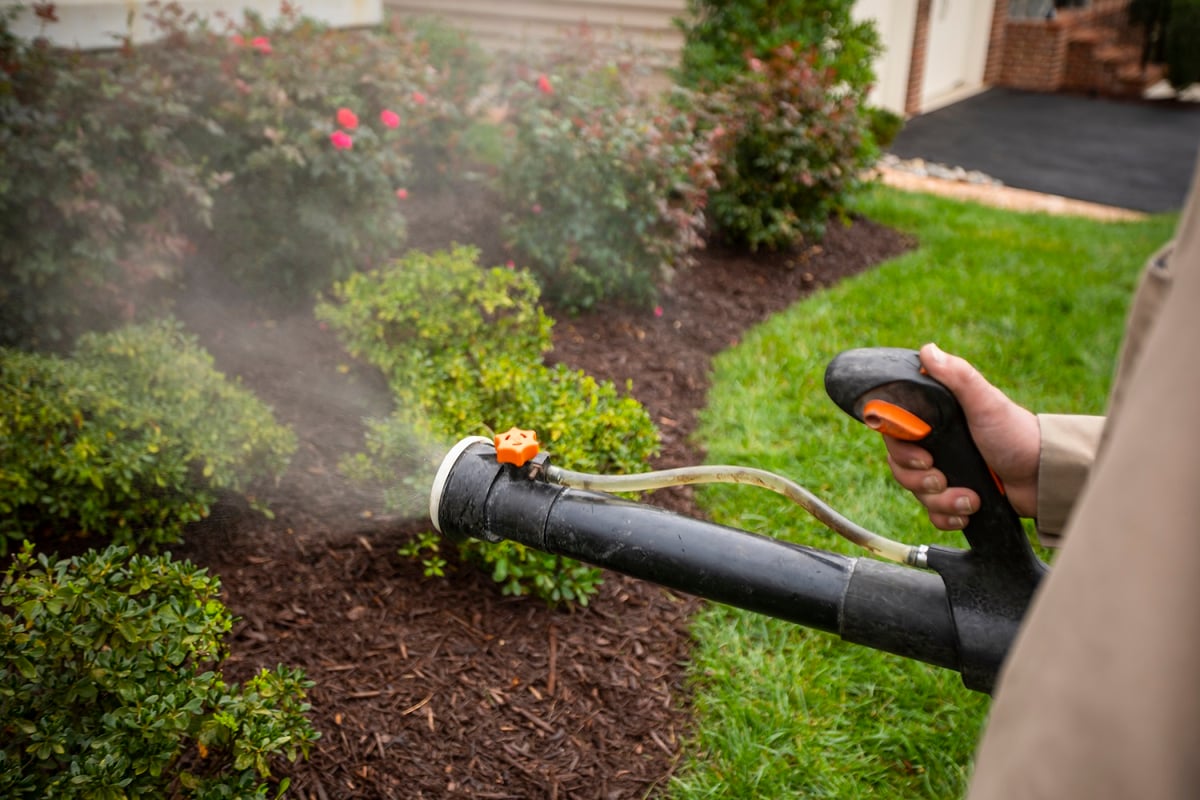 This is usually in April or when consistent, warmer temperatures arrive. Maryland mosquito season typically lasts from April through October or November.
This is usually in April or when consistent, warmer temperatures arrive. Maryland mosquito season typically lasts from April through October or November.
Mosquito activity typically peaks during dusk. When you’re outside during summer evenings, you’re more likely to get bit. But some mosquitoes are also active during the morning and late afternoon, such as the Asian Tiger mosquito.
Where Do Mosquitoes Hang Out?
Mosquitoes in Maryland like warm, wet places. Mosquitoes enjoy hiding under leaf and wood piles, under decks, and in darker and cooler places.
They lay their eggs in standing water, which incubates their eggs. Unfortunately, mosquitoes can breed very quickly and easily, doubling and tripling their numbers in small pools and puddles of water, in addition to flooded ditches, ponds, rivers, and lakes. This is why eliminating standing water is a key part of Maryland mosquito control.
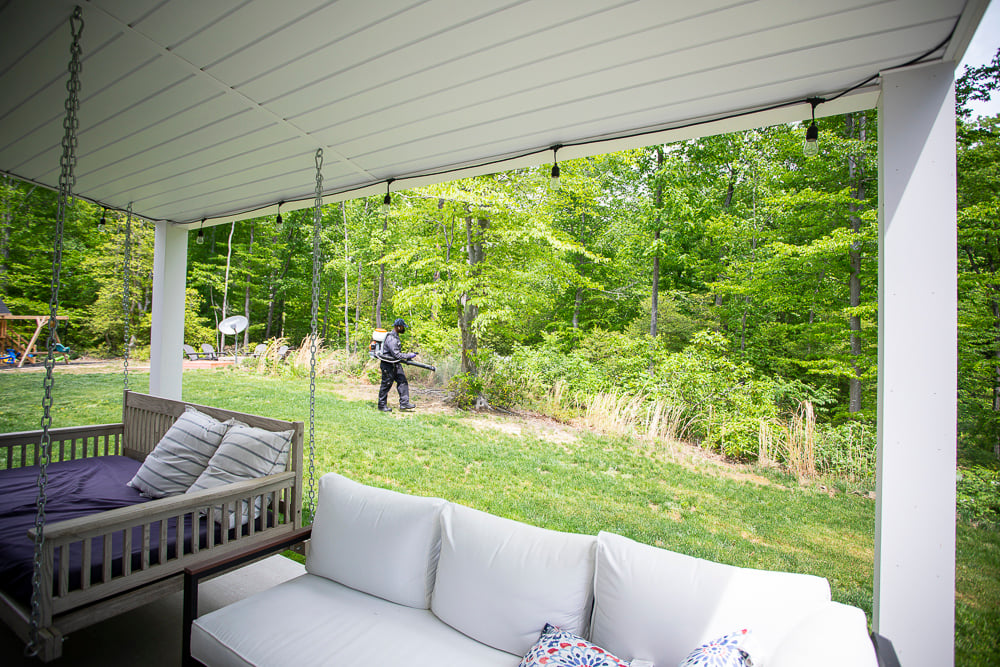 Mosquitoes are also attracted to carbon dioxide, which is the gas that humans and animals exhale. Mosquitoes can sense it from 30 feet away and are attracted to it because they know they can find meals nearby. As if that wasn’t bad enough, mosquitoes can also detect chemicals in human sweat.
Mosquitoes are also attracted to carbon dioxide, which is the gas that humans and animals exhale. Mosquitoes can sense it from 30 feet away and are attracted to it because they know they can find meals nearby. As if that wasn’t bad enough, mosquitoes can also detect chemicals in human sweat.
How to Get Rid of Mosquitoes in Your Yard
Mosquitoes might be some of the most annoying pests in Maryland.
They don’t care if they land in your lemonade. Their bites pinch … and then comes that aggravating itch that lingers for days. Even that whirring sound they make as they fly past your ear can make you cringe. On top of that, one bite could transmit a pretty nasty disease like West Nile or Lyme.
It’s no wonder you want them gone so you can get back to enjoying your outdoor barbecue.
Let’s review some Maryland mosquito control options. This way you can distinguish the solutions that work from those that don’t.
Prevention Comes First
The first step in how to get rid of mosquitoes outside is to follow some key prevention tactics that can limit mosquito populations.
- Limit standing water. Mosquitoes love water, and they need it to make mosquito babies. So keeping standing water to a minimum can ensure you reduce their numbers. Unfortunately, mosquitoes only need as much as a bottlecap full of water to breed. To really watch the water that can add up, make sure your gutters are draining properly; refresh the water in pet bowls and bird baths every few days; don’t let water collect in trash can lids, flower pots, and other areas; and use bubblers or fountains to keep water moving in ponds.
- Encourage air movement. Mosquitoes prefer dense trees and shrubs where humidity likes to linger because there isn’t a lot of wind and air in these spaces. Trim trees and shrubs to keep air moving in your yard.
Yard Treatment for Mosquitoes in Maryland
Sure, you could continue covering yourself with mosquito repellent, but it’s sticky and wipes off easily, and doesn’t always smell great.
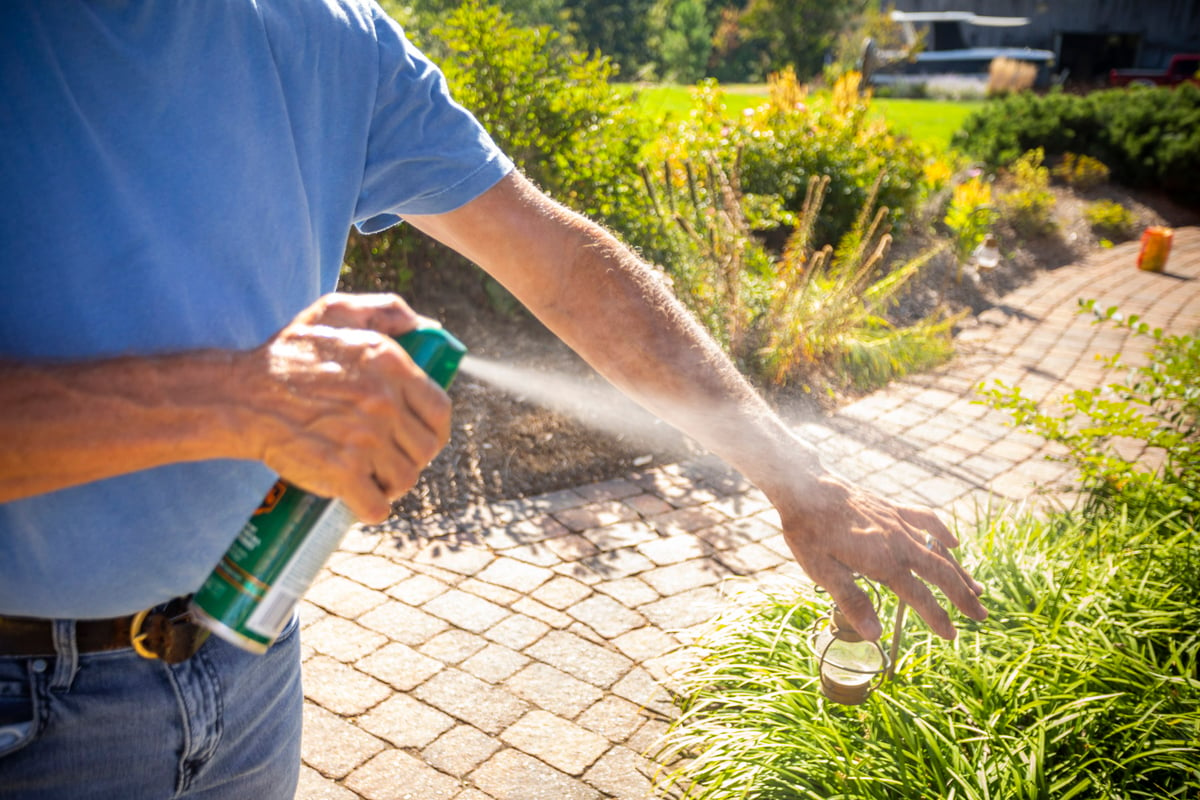 Opting for a professional mosquito control service can be a better option for keeping those mosquito populations down.
Opting for a professional mosquito control service can be a better option for keeping those mosquito populations down.
Here are some common questions about mosquito control to help you better understand how it works.
How Often Should a Professional Be Treating Your Yard for Mosquitoes?
To battle mosquitoes, Natural Green Systems will treat your property every 30 days during prime mosquito season – from April through October.
This consistency is important because mosquito control can lose effectiveness after 30 days, so maintaining this barrier will help keep the pests away.
How Does Treating Your Yard for Mosquitoes Work?
When a professional for mosquito control treatments comes into your yard, they use specialized equipment to target the insects, such as a backpack mister that emits a super fine mist that can reach tiny pests like mosquitoes. These targeted applications of professional grade products ensure better, longer lasting control.
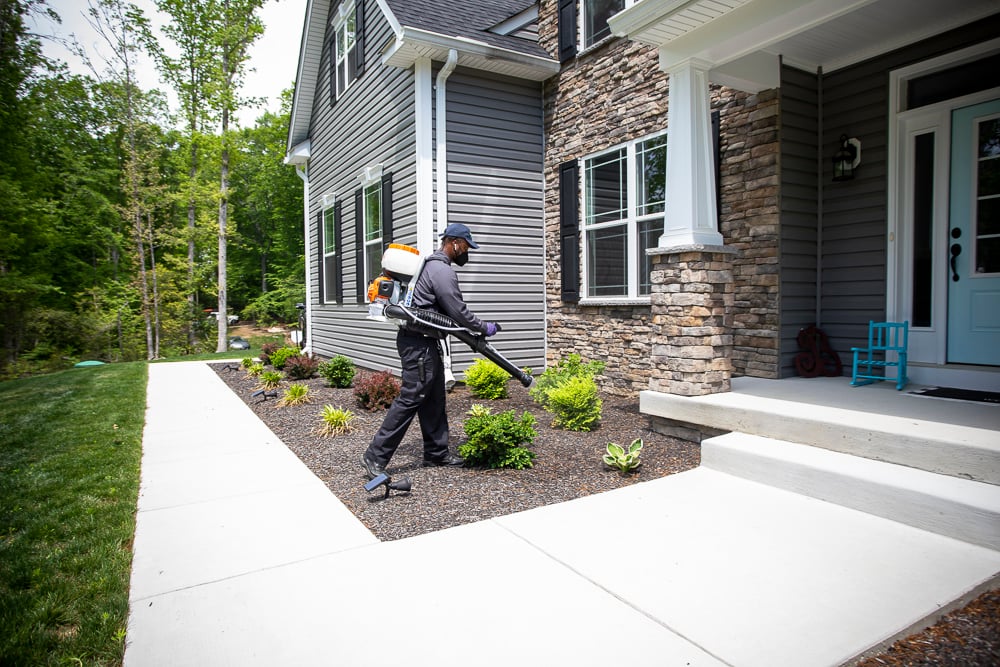 They direct the applications where they are most effective, including the undersides of trees and shrubs, under decks, near patios, and at property edges.
They direct the applications where they are most effective, including the undersides of trees and shrubs, under decks, near patios, and at property edges.
How Much Does Maryland Mosquito Control Cost?
Mosquito control treatments can range in cost based on your yard size.
In Central and Southern Maryland, most residential properties are somewhere between 5,000 and 15,000 square feet in size.
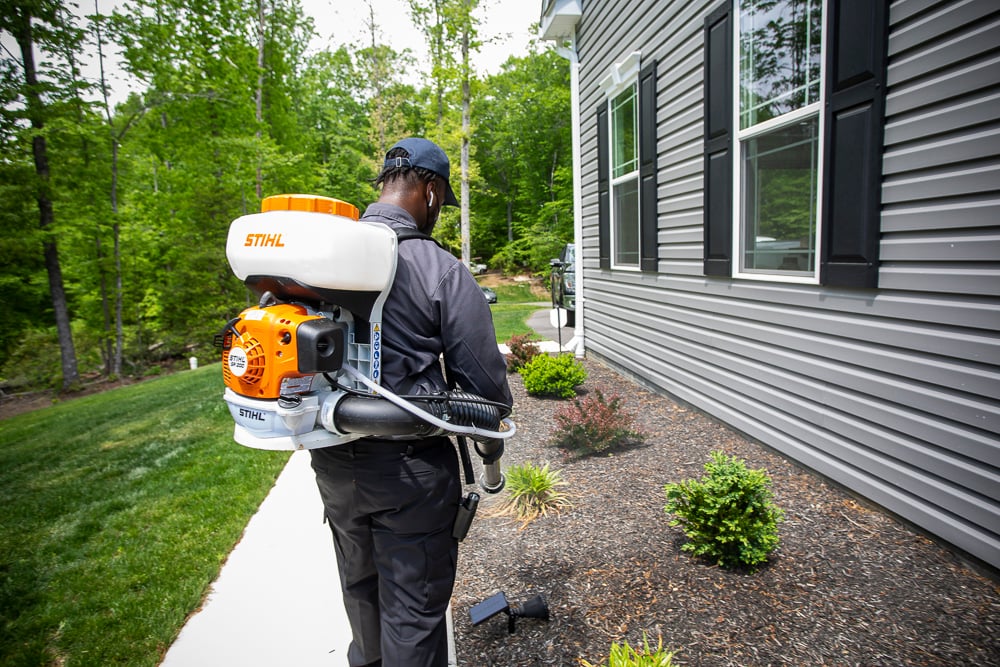 Yard treatment for mosquitoes in Maryland on properties between these sizes typically range between $75 and $110 per application. Most professionals recommend a minimum of four to six treatments during the mosquito season to keep consistent control.
Yard treatment for mosquitoes in Maryland on properties between these sizes typically range between $75 and $110 per application. Most professionals recommend a minimum of four to six treatments during the mosquito season to keep consistent control.
Facts About Fleas in Maryland
Spotting fleas on your dog’s fur or your favorite living room chair is not a welcome occurrence.
And even though these pests are small, they can bring some big problems through your door.
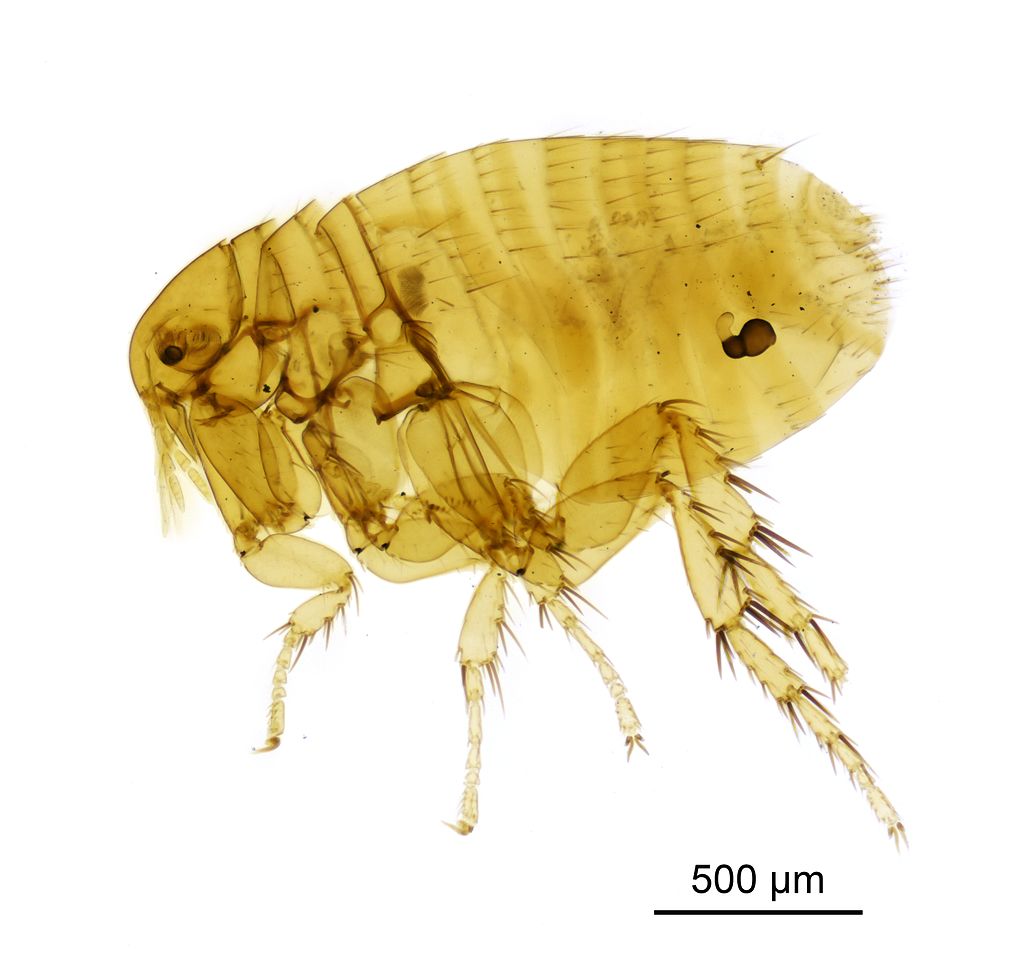 Let’s look at some facts about fleas in the yard to ensure you have all the information you need about fleas in Maryland.
Let’s look at some facts about fleas in the yard to ensure you have all the information you need about fleas in Maryland.
- Fleas can take in quite a bit of blood – 15 times their own bodyweight.
- What do fleas look like? Fleas are small - 2.5 millimeters in length – wingless insects with long flat bodies.
- Fleas can hide in pet or wild animal fur, pet beds, carpets, furniture, and mattresses.
- Fleas only live 3 months.
- A female flea can lay 2,000 eggs in its lifetime.
- Fleas prefer cool, shady locations, such as under wood or leaf piles, and in grasses, shrubs, and plants.
- Fleas can jump 8 to 20 inches at a time.
- Fleas can carry typhus, plague, and tularemia, which is a good reason you’d want to kill fleas in the yard.
What You Need to Know About Ticks in Maryland
You’re not alone if you worry about ticks in Maryland.
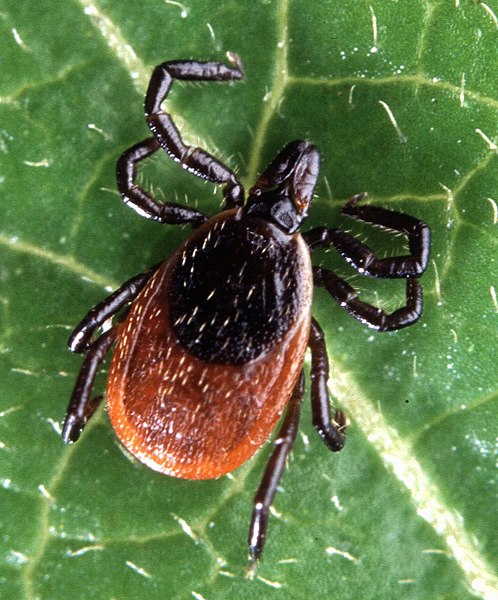 But you might not be aware of all the tick realities out there. Let’s talk about tick truths so you can better understand what kills ticks in the yard.
But you might not be aware of all the tick realities out there. Let’s talk about tick truths so you can better understand what kills ticks in the yard.
- In this area, there are some specific types of ticks in Maryland you’ll most often find, including the American dog tick, the lone star tick, and the blacklegged tick, which is sometimes known as the deer tick. While blacklegged ticks can carry lyme disease, American dog ticks and lone star ticks can spread Rocky Mountain spotted fever and ehrlichiosis.
- When are ticks active in Maryland? Ticks become active when daytime temperatures are consistently at or above 50 degrees Fahrenheit. Also at this time, more wild animals like deer and rabbits start foraging and moving about, and ticks catch rides on them as they move through your yard.
- Ticks feed on the blood of people and animals. These blood meals help them grow through their four life stages (egg, larva, nymph, and adult). Without regular blood meals, ticks can die.
- Ticks find their meals by crawling up on tall grasses and weeds and using their third and fourth pairs of legs to hang on while trying to grab on to hosts walking by with their front legs.
- You may not even feel a tick when it bites you. This is why if you’ve been walking in tall grasses or areas where you suspect tick activity, you’ll want to check yourself and your pets or children for ticks when you’re back inside. If you do find a tick in your skin, you want to use tweezers and make sure you remove the head with the body. Pay attention to common signs of tick-borne illnesses after removing the tick, including fever, chills, aches, headaches, fatigue, and rashes.
How to Prevent Fleas and Ticks in Your Yard
There are some strategies you can use to specifically limit these pesky fleas and ticks from congregating in your Central and Southern Maryland landscape.
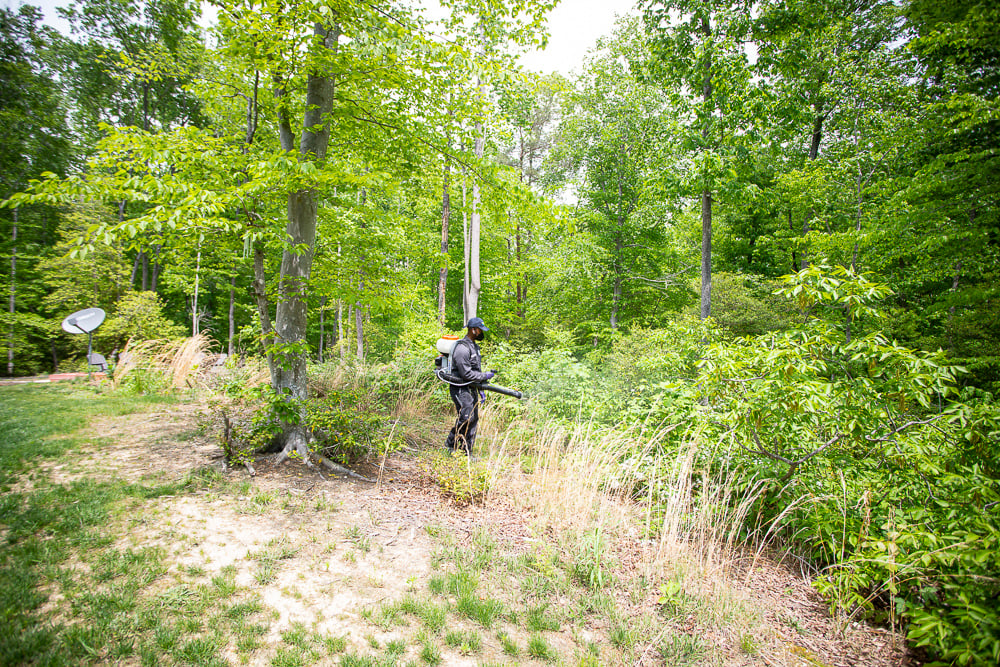 Let’s start with things you can begin doing today to reduce their numbers in your yard.
Let’s start with things you can begin doing today to reduce their numbers in your yard.
- Remember to mow your grass and any other tall vegetation regularly. Fleas and ticks like to hang out in taller grassy areas. To prevent fleas and ticks in Maryland, maintain your lawn at a 3- to 4-inch height.
- If you have natural flea and tick habitats (think large nature preserves or wooded areas) bordering your backyard, keep swing sets, fire pits, dog houses, and patios away from those edges since more fleas and ticks will congregate there.
- Since fleas and ticks travel into your yard on wild animals, keep these pets out by storing wood piles at least 20 feet from your home, sealing trash bins securely, and trimming large plants and grass regularly to limit wild animal hangouts.
- Hire a professional flea and tick yard treatment company to help eliminate these pests from your yard and keep them away.
FAQs About Professional Flea and Tick Yard Treatments
We know how frustrating it can be when pests this tiny can threaten your outside time in your own yard. Ticks surprisingly show up under your skin and carry some nasty diseases and fleas can infest your pets and homes.
As you search for professional flea and tick yard treatments, you might be wondering how these applications work, when to treat your yard for fleas and ticks, how much does yard flea and tick control cost, and whether there are pet safe flea and tick yard treatments. Let’s go through the details so you know what to expect.
How Does Flea and Tick Control Work?
Professional flea and tick yard treatments typically consist of a liquid application to landscape beds and lawn areas, as well as other pest harborage areas.
When Are Flea and Tick Treatments Applied?
Flea and tick applications in Central and Southern Maryland should begin in April when temperatures reach approximately 50 degrees Fahrenheit, and then reapplied every 30 days.
Professionals recommend six applications monthly from April through October. Since the products only last about 30 days, you want to keep up that barrier of control through the most active pest months.
How Much Does Yard Flea and Tick Control Cost?
Flea and tick control treatments by a professional pest control company usually cost between $55 and $69 per application for a yard that is between 5,000 and 10,000 square feet.
This one application each visit controls both pests.
Are There Pet-Safe Flea and Tick Yard Treatments?
Yes. Professional pest control companies use pet-safe flea and tick yard treatment products.
You might find that the same active ingredients used in flea and tick treatments for your landscape are also the ones that are included in your pet’s flea and tick shampoo.
 Once your yard is treated with liquid products, you should wait approximately 30 minutes until your lawn is dry before letting your pets outside.
Once your yard is treated with liquid products, you should wait approximately 30 minutes until your lawn is dry before letting your pets outside.
How to Choose a Professional Service For Mosquito, Flea, and Tick Control in Central and Southern Maryland
While you might be trying to combat mosquitoes, fleas, and ticks on your own, the process can feel like it takes over your summer. But it doesn’t have to.
You can hire a company that provides you with professional flea and tick control in Central and Southern Maryland to save you time and money and banish these bugs for good.
But maybe you aren’t sure what to look for when hiring the right business. Here are some factors to consider to ensure you find the right partner in your battle against these pests.
- Seek a company that knows their products and how long they last in the landscape. You don’t want a company that is going to come out once and promise instant control. You need a business that knows when these products wear off and how often they need to return for consistent control.
- Hire a pest control company that offers mosquito, flea, and tick control in Central and Southern Maryland that employs experienced technicians. This experience will ensure a targeted application by professionals that’s more apt to control these pests since the products are applied with the right equipment and at the right places. An experienced technician will know where these pests hang out.
- Look for a company that offers more than just mosquito, flea, and tick control. That way, you can get your pests taken care of and have a great-looking lawn to boot with proper fertilization; weed, disease, and insect control; and aeration and overseeding services. What’s more is you only have one company to contact.
We understand that controlling mosquitoes, fleas, and ticks in your Maryland yard can become overwhelming. Natural Green wants to help you make the most informed and best decision in choosing the right pest control company for you. We are happy to take the time to assist you in comparing programs and prices.
Image Source: Mosquito, Flea, Tick
Who doesn’t want to enjoy warm summer days and evenings? Grilling out on the patio can build memorable moments with family and friends. Throwing the ball with the kids or the dog gets everyone outside enjoying the fresh air. And sometimes even just sitting outdoors and listening to the birds sing can help decrease anxiety and give you a moment to unwind. This is your home landscape, and you want to enjoy it.
What you don’t want during these times outside are unwanted guests … and we’re not talking about nosy neighbors. We’re talking about small, pesky insects that are eyeing you and your family members like meals.
Yep, we’re talking about mosquitoes, fleas, and ticks. Whether it’s the itchy welts they cause or their blood-sucking ways, none of these pests are welcome in your yard. Not only are they annoying, but they can also carry some pretty nasty diseases.
You could douse yourself with bug spray, wear multiple layers of clothing, and light all the citronella candles in the world, but you still might not be able to keep them away.
Let’s learn more about these pests and how to get rid of mosquitoes in Maryland and fleas and ticks in Maryland.
Table of Contents
- What to Know About Mosquitoes in Your Yard
- How to Get Rid of Mosquitoes in Your Yard
- Facts about Fleas in Maryland
- What You Need to Know About Ticks in Maryland
- How to Prevent Fleas and Ticks in Your Yard
- FAQs About Professional Flea and Tick Yard Treatments
- How to Choose a Mosquito, Flea, and Tick Control Service in Central and Southern Maryland
What to Know About Mosquitoes in Your Yard
Mosquitoes in Maryland can not only be a major source of frustration, keeping you from being able to spend time in your very own yard, but they can also be a serious threat.
Use This Tool to Compare Your Local Pest Control Companies
Let’s look at some key facts about mosquitoes so you can understand these pests a bit better.
Which Mosquitoes Are Most Problematic in Maryland?
There are three major mosquito breeds you will typically see in your Maryland backyard.
The main types of mosquitoes are:
- Asian Tiger
- Common House
- Yellow Fever
All three of these mosquitoes can spread diseases like West Nile, Zika, dengue, and malaria.
 A female mosquito can lay nearly 400 eggs at a time. Approximately 12 days later, you’ll have new adults buzzing about. If you can believe it, mosquitoes only live for about 14 days, but they can cause quite a bit of trouble in that time.
A female mosquito can lay nearly 400 eggs at a time. Approximately 12 days later, you’ll have new adults buzzing about. If you can believe it, mosquitoes only live for about 14 days, but they can cause quite a bit of trouble in that time.
When Do Mosquitoes Come Out in Maryland?
Mosquitoes become active in Central and Southern Maryland when temperatures reach the upper 40s.
 This is usually in April or when consistent, warmer temperatures arrive. Maryland mosquito season typically lasts from April through October or November.
This is usually in April or when consistent, warmer temperatures arrive. Maryland mosquito season typically lasts from April through October or November.
Mosquito activity typically peaks during dusk. When you’re outside during summer evenings, you’re more likely to get bit. But some mosquitoes are also active during the morning and late afternoon, such as the Asian Tiger mosquito.
Where Do Mosquitoes Hang Out?
Mosquitoes in Maryland like warm, wet places. Mosquitoes enjoy hiding under leaf and wood piles, under decks, and in darker and cooler places.
They lay their eggs in standing water, which incubates their eggs. Unfortunately, mosquitoes can breed very quickly and easily, doubling and tripling their numbers in small pools and puddles of water, in addition to flooded ditches, ponds, rivers, and lakes. This is why eliminating standing water is a key part of Maryland mosquito control.
 Mosquitoes are also attracted to carbon dioxide, which is the gas that humans and animals exhale. Mosquitoes can sense it from 30 feet away and are attracted to it because they know they can find meals nearby. As if that wasn’t bad enough, mosquitoes can also detect chemicals in human sweat.
Mosquitoes are also attracted to carbon dioxide, which is the gas that humans and animals exhale. Mosquitoes can sense it from 30 feet away and are attracted to it because they know they can find meals nearby. As if that wasn’t bad enough, mosquitoes can also detect chemicals in human sweat.
How to Get Rid of Mosquitoes in Your Yard
Mosquitoes might be some of the most annoying pests in Maryland.
They don’t care if they land in your lemonade. Their bites pinch … and then comes that aggravating itch that lingers for days. Even that whirring sound they make as they fly past your ear can make you cringe. On top of that, one bite could transmit a pretty nasty disease like West Nile or Lyme.
It’s no wonder you want them gone so you can get back to enjoying your outdoor barbecue.
Let’s review some Maryland mosquito control options. This way you can distinguish the solutions that work from those that don’t.
Prevention Comes First
The first step in how to get rid of mosquitoes outside is to follow some key prevention tactics that can limit mosquito populations.
- Limit standing water. Mosquitoes love water, and they need it to make mosquito babies. So keeping standing water to a minimum can ensure you reduce their numbers. Unfortunately, mosquitoes only need as much as a bottlecap full of water to breed. To really watch the water that can add up, make sure your gutters are draining properly; refresh the water in pet bowls and bird baths every few days; don’t let water collect in trash can lids, flower pots, and other areas; and use bubblers or fountains to keep water moving in ponds.
- Encourage air movement. Mosquitoes prefer dense trees and shrubs where humidity likes to linger because there isn’t a lot of wind and air in these spaces. Trim trees and shrubs to keep air moving in your yard.
Yard Treatment for Mosquitoes in Maryland
Sure, you could continue covering yourself with mosquito repellent, but it’s sticky and wipes off easily, and doesn’t always smell great.
 Opting for a professional mosquito control service can be a better option for keeping those mosquito populations down.
Opting for a professional mosquito control service can be a better option for keeping those mosquito populations down.
Here are some common questions about mosquito control to help you better understand how it works.
How Often Should a Professional Be Treating Your Yard for Mosquitoes?
To battle mosquitoes, Natural Green Systems will treat your property every 30 days during prime mosquito season – from April through October.
This consistency is important because mosquito control can lose effectiveness after 30 days, so maintaining this barrier will help keep the pests away.
How Does Treating Your Yard for Mosquitoes Work?
When a professional for mosquito control treatments comes into your yard, they use specialized equipment to target the insects, such as a backpack mister that emits a super fine mist that can reach tiny pests like mosquitoes. These targeted applications of professional grade products ensure better, longer lasting control.
 They direct the applications where they are most effective, including the undersides of trees and shrubs, under decks, near patios, and at property edges.
They direct the applications where they are most effective, including the undersides of trees and shrubs, under decks, near patios, and at property edges.
How Much Does Maryland Mosquito Control Cost?
Mosquito control treatments can range in cost based on your yard size.
In Central and Southern Maryland, most residential properties are somewhere between 5,000 and 15,000 square feet in size.
 Yard treatment for mosquitoes in Maryland on properties between these sizes typically range between $75 and $110 per application. Most professionals recommend a minimum of four to six treatments during the mosquito season to keep consistent control.
Yard treatment for mosquitoes in Maryland on properties between these sizes typically range between $75 and $110 per application. Most professionals recommend a minimum of four to six treatments during the mosquito season to keep consistent control.
Facts About Fleas in Maryland
Spotting fleas on your dog’s fur or your favorite living room chair is not a welcome occurrence.
And even though these pests are small, they can bring some big problems through your door.
 Let’s look at some facts about fleas in the yard to ensure you have all the information you need about fleas in Maryland.
Let’s look at some facts about fleas in the yard to ensure you have all the information you need about fleas in Maryland.
- Fleas can take in quite a bit of blood – 15 times their own bodyweight.
- What do fleas look like? Fleas are small - 2.5 millimeters in length – wingless insects with long flat bodies.
- Fleas can hide in pet or wild animal fur, pet beds, carpets, furniture, and mattresses.
- Fleas only live 3 months.
- A female flea can lay 2,000 eggs in its lifetime.
- Fleas prefer cool, shady locations, such as under wood or leaf piles, and in grasses, shrubs, and plants.
- Fleas can jump 8 to 20 inches at a time.
- Fleas can carry typhus, plague, and tularemia, which is a good reason you’d want to kill fleas in the yard.
What You Need to Know About Ticks in Maryland
You’re not alone if you worry about ticks in Maryland.
 But you might not be aware of all the tick realities out there. Let’s talk about tick truths so you can better understand what kills ticks in the yard.
But you might not be aware of all the tick realities out there. Let’s talk about tick truths so you can better understand what kills ticks in the yard.
- In this area, there are some specific types of ticks in Maryland you’ll most often find, including the American dog tick, the lone star tick, and the blacklegged tick, which is sometimes known as the deer tick. While blacklegged ticks can carry lyme disease, American dog ticks and lone star ticks can spread Rocky Mountain spotted fever and ehrlichiosis.
- When are ticks active in Maryland? Ticks become active when daytime temperatures are consistently at or above 50 degrees Fahrenheit. Also at this time, more wild animals like deer and rabbits start foraging and moving about, and ticks catch rides on them as they move through your yard.
- Ticks feed on the blood of people and animals. These blood meals help them grow through their four life stages (egg, larva, nymph, and adult). Without regular blood meals, ticks can die.
- Ticks find their meals by crawling up on tall grasses and weeds and using their third and fourth pairs of legs to hang on while trying to grab on to hosts walking by with their front legs.
- You may not even feel a tick when it bites you. This is why if you’ve been walking in tall grasses or areas where you suspect tick activity, you’ll want to check yourself and your pets or children for ticks when you’re back inside. If you do find a tick in your skin, you want to use tweezers and make sure you remove the head with the body. Pay attention to common signs of tick-borne illnesses after removing the tick, including fever, chills, aches, headaches, fatigue, and rashes.
How to Prevent Fleas and Ticks in Your Yard
There are some strategies you can use to specifically limit these pesky fleas and ticks from congregating in your Central and Southern Maryland landscape.
 Let’s start with things you can begin doing today to reduce their numbers in your yard.
Let’s start with things you can begin doing today to reduce their numbers in your yard.
- Remember to mow your grass and any other tall vegetation regularly. Fleas and ticks like to hang out in taller grassy areas. To prevent fleas and ticks in Maryland, maintain your lawn at a 3- to 4-inch height.
- If you have natural flea and tick habitats (think large nature preserves or wooded areas) bordering your backyard, keep swing sets, fire pits, dog houses, and patios away from those edges since more fleas and ticks will congregate there.
- Since fleas and ticks travel into your yard on wild animals, keep these pets out by storing wood piles at least 20 feet from your home, sealing trash bins securely, and trimming large plants and grass regularly to limit wild animal hangouts.
- Hire a professional flea and tick yard treatment company to help eliminate these pests from your yard and keep them away.
FAQs About Professional Flea and Tick Yard Treatments
We know how frustrating it can be when pests this tiny can threaten your outside time in your own yard. Ticks surprisingly show up under your skin and carry some nasty diseases and fleas can infest your pets and homes.
As you search for professional flea and tick yard treatments, you might be wondering how these applications work, when to treat your yard for fleas and ticks, how much does yard flea and tick control cost, and whether there are pet safe flea and tick yard treatments. Let’s go through the details so you know what to expect.
How Does Flea and Tick Control Work?
Professional flea and tick yard treatments typically consist of a liquid application to landscape beds and lawn areas, as well as other pest harborage areas.
When Are Flea and Tick Treatments Applied?
Flea and tick applications in Central and Southern Maryland should begin in April when temperatures reach approximately 50 degrees Fahrenheit, and then reapplied every 30 days.
Professionals recommend six applications monthly from April through October. Since the products only last about 30 days, you want to keep up that barrier of control through the most active pest months.
How Much Does Yard Flea and Tick Control Cost?
Flea and tick control treatments by a professional pest control company usually cost between $55 and $69 per application for a yard that is between 5,000 and 10,000 square feet.
This one application each visit controls both pests.
Are There Pet-Safe Flea and Tick Yard Treatments?
Yes. Professional pest control companies use pet-safe flea and tick yard treatment products.
You might find that the same active ingredients used in flea and tick treatments for your landscape are also the ones that are included in your pet’s flea and tick shampoo.
 Once your yard is treated with liquid products, you should wait approximately 30 minutes until your lawn is dry before letting your pets outside.
Once your yard is treated with liquid products, you should wait approximately 30 minutes until your lawn is dry before letting your pets outside.
How to Choose a Professional Service For Mosquito, Flea, and Tick Control in Central and Southern Maryland
While you might be trying to combat mosquitoes, fleas, and ticks on your own, the process can feel like it takes over your summer. But it doesn’t have to.
You can hire a company that provides you with professional flea and tick control in Central and Southern Maryland to save you time and money and banish these bugs for good.
But maybe you aren’t sure what to look for when hiring the right business. Here are some factors to consider to ensure you find the right partner in your battle against these pests.
- Seek a company that knows their products and how long they last in the landscape. You don’t want a company that is going to come out once and promise instant control. You need a business that knows when these products wear off and how often they need to return for consistent control.
- Hire a pest control company that offers mosquito, flea, and tick control in Central and Southern Maryland that employs experienced technicians. This experience will ensure a targeted application by professionals that’s more apt to control these pests since the products are applied with the right equipment and at the right places. An experienced technician will know where these pests hang out.
- Look for a company that offers more than just mosquito, flea, and tick control. That way, you can get your pests taken care of and have a great-looking lawn to boot with proper fertilization; weed, disease, and insect control; and aeration and overseeding services. What’s more is you only have one company to contact.
We understand that controlling mosquitoes, fleas, and ticks in your Maryland yard can become overwhelming. Natural Green wants to help you make the most informed and best decision in choosing the right pest control company for you. We are happy to take the time to assist you in comparing programs and prices.
Share This
Topics: Pest Control, Guide


